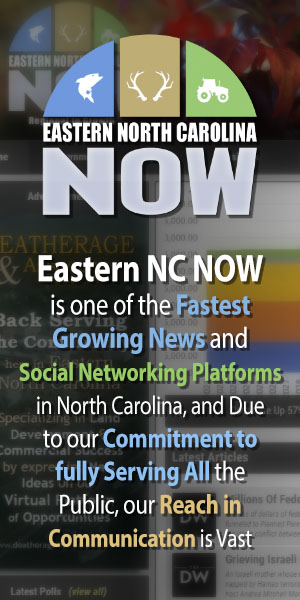Publisher's note: The John William Pope Center for Education Policy provides a treasure trove of information suggesting the better path forward in regards to North Carolina's number one issue - public education. Public education, at all levels, requires a significant amount of funding from our state government, and all one hundred North Carolina counties, so it is essential that leaders effecting education policy get it right, and know that concerned entities, like the John William Pope Center, will be minding their progress to do so. We welcome the John William Pope Center for Education Policy to our growing readership, and expect our readers to learn all they can to do their part in this wise endeavor to better educate our People.
This post was created by the Pope Center Staff.
Looking back at all that happened in higher education this year is enough to make your head spin. One minute, state politicians are finally making good policies; the next, university officials are caving to irrational demands. At the other end of the spectrum, politicians are promoting policies of monumental stupidity, while the courts are making surprisingly good decisions (but not always). A majority of students favor putting extreme limits for political correctness on free speech, while an opposition is coalescing around protecting the First Amendment and due legal processes. And on and on it goes.
To try to capture the spirit of 2015, the Pope Center staff identified ten of the year's major trends and events. They are:
Higher Ed Policy Makes the Big Time
By Jay Schalin
This was the year when higher education became a major political issue during the presidential primary campaigns. In the past, it wasn't even a blip on the screen. But the federal government has long been encroaching on higher education through financial aid policies and research grants. Additionally, the political left has used federal legislation such as the Higher Education Act to promote their egalitarian social agenda. Especially pertinent is that act's Title IX, which is the legislation fueling much of the controversy over gender roles and responsibilities on campus.
With student loans receiving so much publicity, this year's crop of Democratic candidates has
latched onto the issue as means to gain votes (see "free college" below).
On
the Republican side, there were initially nine current or former governors vying for the nomination. Unlike national politicians, governors often have direct influence on their states' higher education systems, so it is very much on their radar screens.
The additional attention is a welcome development: higher education became the left-wing bastion it currently is by operating out of public view. And while nobody wants national politicians directly determining course content, they can at least stop funding one-sided academic propaganda machines and making higher education policies in the shadows.
Whose University? Our University!
By Jesse Saffron
Last fall, many campuses across the country erupted into protests for social justice. The race-related accusations and demands of the campus activists, for whom political expedience often trumped free speech and civility, caught the educational establishment by surprise.
On November 19, I got a first-hand look at this phenomenon.
I attended an event on "race and inclusion" at UNC-Chapel Hill at which several dozen students marched in shortly after the opening remarks, chanting, "Whose university? Our university!"
They then seized a microphone to read a list of demands (similar to those made by Black Lives Matters protesters at other universities), hijacking the proceedings. None of the leaders in attendance-including Chancellor Carol Folt, trustees, administrators, and professors-spoke up or attempted to restore order.
Unfortunately, such submission to unruly mobs has been common in recent months. Rather than defend open dialogue and debate, some universities have yielded to angry students. A few officials have resigned, including the president and chancellor of the University of Missouri. At Brown University, leaders pledged to spend $100 million on "diversity training" and politically correct initiatives promoted by activists.
Let's hope that, in 2016, higher education leaders choose more principled, less craven means of addressing such radical and irrational outbursts.
Progress At Last!
By Jenna A. Robinson
The North Carolina General Assembly enacted five important higher education reforms this year. The first was part of the budget bill passed in September. Legislators voted to bring a new, innovative online school-Western Governor's University-to North Carolina.
WGU uses a competency-based model that will help non-traditional students complete their studies more quickly.
The same bill directed the UNC system and the Community College system to work towards creating a
Guaranteed Admissions Program (GAP). The program works by identifying students who satisfy UNC institutions' official admissions criteria, but who are academically weaker than their peers. These students would be given a promise of admission to the UNC schools to which they applied after they complete an associate's degree at a North Carolina community college.
Legislators also moved to end remedial education in the UNC system. The budget bill ended funding for the Academic Summer Bridge Program, which is intended to provide an academic "boot camp" and remedial education resources for ill-prepared students at the state's historically black universities.
The latest budget also raised minimum admissions requirements for teacher preparation programs. As Jesse Saffron reported
here, it "requires the UNC Board of Governors to set the minimum SAT score (combined verbal and math) for students seeking entry to education schools at 1,100 and the minimum ACT score at 24. Students also must earn at least a 2.7 GPA in high school to be admitted to a program, and the average GPA of students in each program must be at least 3.0."
Lastly, the legislature defunded the politicized Hunt Institute at UNC-Chapel Hill, named after former Democratic Governor Jim Hunt. The Institute explores education policy and will now need to rely on private funding.
Racial Preferences' Hold on Academia Weakened
By George Leef
It is possible that 2015 will turn out to be a pivotal year with regard to racial preferences in college admissions.
That might be the case owing to the Supreme Court's decision to rehear the challenge to the University of Texas's program in the Fisher case. The Court heard oral arguments on that dispute December 9 and we will find out how the justices ruled next spring.
What makes me more optimistic about the prospect of turning away from such preferences was a serious defection from the pro-preference coalition, namely Asian Americans. Early this year, there was an effort in the California legislature to overturn that state's anti-race preferences law (Proposition 209, passed in 1996). Even though the Democrats have overwhelming control, they were unable to pass the bill.
What stopped it was the fact that Asian-Americans, who used to back preferences despite the fact that the students most often damaged by preferences for "underrepresented minority groups" were Asian, turned against the bill. I wrote about that change-particularly, an influential article authored by a Chinese businessman who has come to see that it is harmful for universities to favor some students just on account of their race-in
this piece.
No matter what the Court decides, opposition from the influential and growing Asian-American population, combined with the mounting evidence that preferences are detrimental, is likely to turn the tide.
Giving the Boot to Restrictive Speech Codes
By Jenna A. Robinson
UNC-Chapel Hill became the first school in North Carolina given a "green light" rating for free speech by the Foundation for Individual Rights in Education, a leading free speech advocacy non-profit organization.
The process began in April of 2014, when UNC's administration began working with FIRE to address overly restrictive rules. The school then had two "yellow light" speech codes (FIRE rates free speech regulations on campuses using traffic light colors, with red the worst and green the best.)
UNC-CH revised the first, which limited distribution of student flyers in residence halls. The university then eliminated its ban on speech that "disparages" another person.
This positive step comes as many university students have moved in the opposite direction. The 2015 Buckley Free Speech Survey revealed a disturbing trend on college campuses. Students' responses show that they neither experience nor appreciate the protections of the first amendment on campus.
By a 52-42 percent margin, students say their college or university should forbid people from speaking on campus who have a history of engaging in hate speech. Only a bare majority (52 percent) said that the First Amendment does not make an exemption for hate speech and that all speech is protected under the First Amendment. One in three (35 percent) say that hate speech is not protected under the First Amendment. By a 51 percent to 36 percent margin, students favor their school having speech codes to regulate speech for students and faculty.
The Chicago School of Free Speech Arrives In the Nick of Time
By Stephanie Keaveney
This year saw some depressing news about the state of free speech on campus, with many students turning away from basic First Amendment principles. But there was one really positive development: the so-called "Chicago Statement" defining a workable framework around which free speech proponents can coalesce.
In January 2015, the
Committee on Freedom of Expression at the University of Chicago released a report on free speech articulating a broad commitment to "free, robust, and uninhibited debate and deliberation among all members of the University's community." The statement asserted that "it is not the proper role of the University to attempt to shield individuals from ideas and opinions they find unwelcome, disagreeable, or even deeply offensive."
The release of the statement marked the creation of the "Chicago School of Free Speech" and spurred both the Foundation for Individual Rights in Education and the American Council of Trustees and Alumni to launch campaigns encouraging universities across the country to adopt the policy.
So far, Princeton, American, Purdue, Johns Hopkins, and the University of Wisconsin system have adopted all or parts of the Chicago Statement. In September, North Carolina's Winston-Salem State University became the first (and, so far, only) historically black college or university to adopt the Chicago statement, with a faculty vote of 100 to 8 in favor.
When In Doubt, Wear Pants
By Jay Schalin
In 2014, a big issue on campus was sexual harassment and assault. President Obama even gave the movement to unrealistically constrain men's campus behavior a boost in September with his "
It's On Us" campaign. Academic gender warriors heralded the "
one-in-five" statistic that supposedly describes the odds women students have of being assaulted on campus. "Assault" and "harassment" were being
redefined to their most extreme meanings, and many schools adopted the overbearing "
affirmative consent" standard for determining whether relations between men and women were mutually agreed upon or assault.
But in 2015, there started to be considerable pushback. It actually started in December of 2014 with the publication of a
Department of Justice report that revealed that the "one-in-five" statistic way overstated the occurrence of sexual offenses, and that there were fewer such crimes on campus than off.
That report was followed by the January unraveling of a Rolling Stone story about a gang rape at the University of Virginia that
turned out to be fictitious.
The spotlight on sexual crimes revealed the intrinsic injustice of student courts that lack the formal system of checks and balances fundamental to our legal system. The potential damage student courts can do to young men's lives and reputations has resulted in a
counter-movement for due legal processes.
Affirmative consent has proven unpopular with actual judges, as it places the burden of proof on the victim to show that no crime was committed, a reversal of fundamental legal standards. In one case, a University of Tennessee wrestler, Corey Mock, had the case against him thrown out by a judge, but not before he lost a year of school. And, unfortunately, not before his
father was forced to resign from his coaching job at UNC-Chapel Hill for defending his son.
Gainful Employment Rules Cripple For-Profit Colleges
By George Leef
One of the worst developments in the last year was the implementation of the Obama Administration's "Gainful Employment" rules regarding for-profit colleges.
The administration has been very hostile to the for-profit higher education sector from its very beginning and these rules target only for-profit colleges, even though the problems they are designed to address also afflict many public and non-profit institutions.
So often we hear from higher education critics on the left that it is the fault of the school if it has a low graduation rate and if those who do graduate have great difficulty finding work that pays well enough for them to cover their student loan debts. (That's why they're called "gainful employment" rules.)
Similar rules were announced by the Department of Education back in 2012, but were struck down by a federal judge. They were again challenged in court this year, but they were upheld.
Under the metrics of the rules, schools that don't do well enough on their graduation rates and student debt-to-earnings ratios will lose eligibility for further federal student aid money. This will probably put some schools that actually have solid educational programs out of business, as Monroe College's Marc Jerome explained
in this article.
In typical Washington fashion, these rules won't solve the problem, but will have some harmful side effects.
What Are Students Learning (or Not Learning)?
By Jesse Saffron
With tuition prices continuing to rise and student debt continuing to wreak social and economic havoc, one would hope that universities are at least providing students with quality educational experiences. Sadly, that's not always the case.
One year ago, Collegiate Learning Assessment (CLA) results showed that out of 32,000 college students tested, only 40 percent were ready for the white-collar workforce. When it came to writing skills, problem solving, and critical thinking, many students were deemed inadequate.
An Association of American Colleges and Universities survey released last January showed that many employers also found recent graduates to be lacking in those areas. Perhaps not surprising was the finding that surveyed students considered themselves mostly well-prepared.
Such
delusional confidence is to be expected from students. Universities, on the other hand, should take ownership of their shortcomings. For when they don't, essential reforms are ignored or put on the back burner.
That's what happened last summer in the University of North Carolina system. A
survey of regional employers found that students from less-selective schools in the UNC system were deficient in terms of their problem-solving and written and oral communication skills. Yet top UNC officials proposed merely superficial fixes.
Instead of dedicating themselves to improving academic rigor and general education coursework, which would undoubtedly help to ameliorate students' educational woes, university leaders proposed ramping up internship programs and career counseling.
The UNC system's president-elect, Margaret Spellings, has expressed
support for greater accountability in terms of learning outcomes. Perhaps under her leadership (she takes the helm this March), school officials will be held responsible when they compromise educational excellence and fail to ensure that students are improving their skills.
You Get What We Pay For
By Jay Schalin
One of this year's big ideas was "free college for all." I first heard somebody mention it in a serious vein about four years ago at a University of North Carolina Faculty Association meeting. I immediately thought, "that one's gonna happen. Some ideas are just too bad not to take off."
And so it has. After several years of percolating up into the mainstream, the idea hit the big-time last year with Tennessee making community college free for state residents.
This year, the idea really took off. The "
Tennessee Promise" program became reality for the high school Class of 2015. President Obama took the idea of free community college nationwide in January by introducing his "
America's College Promise" program. While it has not yet been passed and funded by Congress, the framework is gradually being created state by state and bureaucratic maneuver by bureaucratic maneuver.
Of course, when a bad idea expanding the government's role makes the rounds, leave it to Bernie Sanders to double down on it. In May, he introduced his "College for All" act in the Senate, in which he proposes free tuition for all four years of college. Plus, he's been
spreading the word during his campaign.
Of course, there are more than a few problems with the idea of free college for all-starting with the massive expense such a program will entail.






















